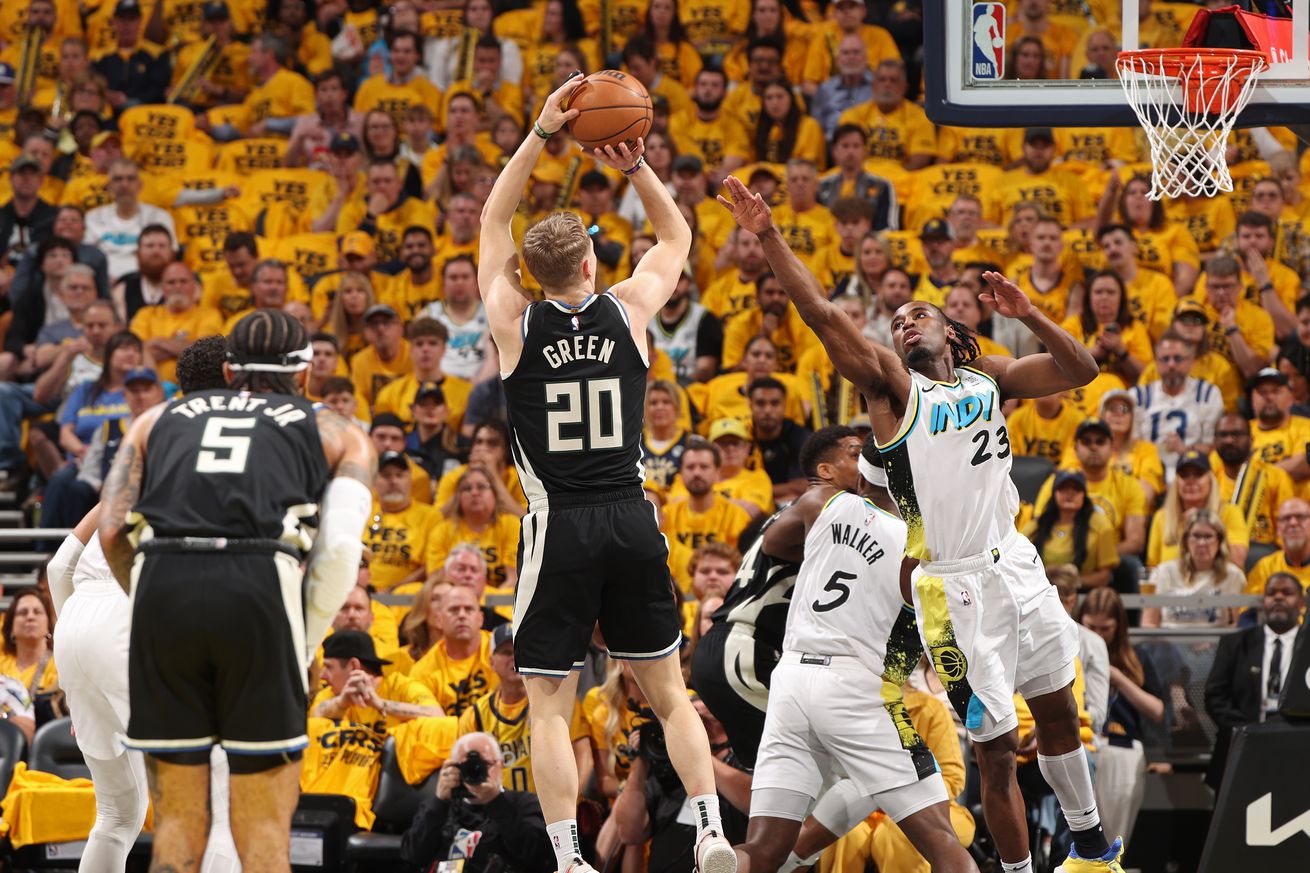
The Bucks sniper can get his first big NBA payday this summer
Among Milwaukee’s seven players currently under contract for 2025–26, only AJ Green is eligible for an extension this summer, two years after he signed his first standard NBA deal. Currently signed through 2025–26 (assuming his salary for the upcoming season is guaranteed, which it will be on July 8th should the Bucks not release him), an extension for Green would begin in 2026–27. He becomes eligible to sign one on July 7th. But how might that look?
Player summary
Since signing as a two-way player after going undrafted in 2022, Green has been something of a shining light for Milwaukee. Doubling his minutes from 2023–24, this season Green firmly established himself in Milwaukee’s rotation, providing knock-down shooting and unexpectedly good D.
Finishing with averages of 7.4 PPG, 2.4 RPG, 1.5 APG, and 43% from three on five attempts per game, Green’s season was highlighted by a pair of 21-point games—entirely from beyond the arc—plus another ten games with four or more threes. Green then upped those numbers to 11.0 PPG, 2.8 RPG, 2.0 APG, and 51% from three on seven attempts per in the postseason, showing he can stand the test of prime time’s bright lights. Perhaps just as importantly, Green showed marked improvement on the other end too. His positional savvy and physicality led to a defensive rating of 107.6, in the same range as savants Lu Dort (107.3), Jrue Holiday (107.7), and Amen Thompson (107.9). And while no one will confuse Green for those All-Defensive studs, he’s certainly not someone who can be hunted.
Also worth noting: Bobby Portis, Giannis, Gary Trent Jr., Green, and Kevin Porter Jr. five-man lineups had an outrageous +56 net rating in the regular season (and a still-impressive +9.5 in the Playoffs). The Bucks even turned to this unit as Game 5’s starting lineup, where Green responded with 19 points and four boards, hitting 6/10 threes in what should have been enough to send the series back to Milwaukee (but let’s not go there). Regardless, this is the blueprint the Bucks must follow—surround Giannis with more athletic, switchable shooters.
Fit moving forward
Even now that we know Porter and Trent will be back, forecasting Green’s role in the short term is difficult. At the very least, Green should match his 2024–25 role as a bench shooter. There’s also the possibility he moves into the starting lineup as the starting two (or even three). Either way, Green’s value to the Bucks is palpable—there just aren’t that many shooters like him around. Longer term, Green’s relative youth (he’ll be 27 to start the 2026–27 season) means he’s likely to continue to grow as a player, so there’s very little risk of downside to an extension. In brief, he’s a must-keep.
The going rate
So, how do we gauge Green’s value? Similar players who’ve relatively recently signed deals include:
- Duncan Robinson: three years, $48m
- Grayson Allen: four years, $70m
- Max Strus: four years, $62m
- Isaiah Joe: four years, $48m
- Sam Hauser: four years, $45m
Ex-Buck Sam Merrill had eerily similar counting stats to Green this year and has reportedly agreed to re-sign with the Cavs on a four-year, $38m deal. Another ex-Buck, Malik Beasley, made just $6m this year, but was previously in that $13–15m per year range, and also has multiple seasons of better production than Green. However, in light of recent news, he probably won’t be getting a new deal in the range of any of the players above, if he is even signed at all. Also worth keeping an eye on is Garrison Matthews, though he is more of a journeyman than the long-term piece that Green can be. Of these, Robinson, Allen, and Strus have all established themselves as at least semi-regular starters, including in the playoffs, while Joe, Hauser, and Merrill are more prototypical bench shooters akin to what we’ve seen from Green thus far.
The verdict
Bang the gavel, this one’s AJ-automatic. Green offers elite volume distance shooting, underrated defence, and relative youth, all of which are invaluable in the current league landscape, particularly on this iteration of the Bucks, which is in flux. Something around three years in the $9–12m annual salary range seems reasonable. Of course, should Milwaukee lose Trent or Porter, his value may even go up.
Over to you, Brew Hoopers, have your say:
